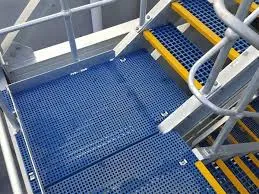
-
 Afrikaans
Afrikaans -
 Albanian
Albanian -
 Amharic
Amharic -
 Arabic
Arabic -
 Armenian
Armenian -
 Azerbaijani
Azerbaijani -
 Basque
Basque -
 Belarusian
Belarusian -
 Bengali
Bengali -
 Bosnian
Bosnian -
 Bulgarian
Bulgarian -
 Catalan
Catalan -
 Cebuano
Cebuano -
 China
China -
 China (Taiwan)
China (Taiwan) -
 Corsican
Corsican -
 Croatian
Croatian -
 Czech
Czech -
 Danish
Danish -
 Dutch
Dutch -
 English
English -
 Esperanto
Esperanto -
 Estonian
Estonian -
 Finnish
Finnish -
 French
French -
 Frisian
Frisian -
 Galician
Galician -
 Georgian
Georgian -
 German
German -
 Greek
Greek -
 Gujarati
Gujarati -
 Haitian Creole
Haitian Creole -
 hausa
hausa -
 hawaiian
hawaiian -
 Hebrew
Hebrew -
 Hindi
Hindi -
 Miao
Miao -
 Hungarian
Hungarian -
 Icelandic
Icelandic -
 igbo
igbo -
 Indonesian
Indonesian -
 irish
irish -
 Italian
Italian -
 Japanese
Japanese -
 Javanese
Javanese -
 Kannada
Kannada -
 kazakh
kazakh -
 Khmer
Khmer -
 Rwandese
Rwandese -
 Korean
Korean -
 Kurdish
Kurdish -
 Kyrgyz
Kyrgyz -
 Lao
Lao -
 Latin
Latin -
 Latvian
Latvian -
 Lithuanian
Lithuanian -
 Luxembourgish
Luxembourgish -
 Macedonian
Macedonian -
 Malgashi
Malgashi -
 Malay
Malay -
 Malayalam
Malayalam -
 Maltese
Maltese -
 Maori
Maori -
 Marathi
Marathi -
 Mongolian
Mongolian -
 Myanmar
Myanmar -
 Nepali
Nepali -
 Norwegian
Norwegian -
 Norwegian
Norwegian -
 Occitan
Occitan -
 Pashto
Pashto -
 Persian
Persian -
 Polish
Polish -
 Portuguese
Portuguese -
 Punjabi
Punjabi -
 Romanian
Romanian -
 Russian
Russian -
 Samoan
Samoan -
 Scottish Gaelic
Scottish Gaelic -
 Serbian
Serbian -
 Sesotho
Sesotho -
 Shona
Shona -
 Sindhi
Sindhi -
 Sinhala
Sinhala -
 Slovak
Slovak -
 Slovenian
Slovenian -
 Somali
Somali -
 Spanish
Spanish -
 Sundanese
Sundanese -
 Swahili
Swahili -
 Swedish
Swedish -
 Tagalog
Tagalog -
 Tajik
Tajik -
 Tamil
Tamil -
 Tatar
Tatar -
 Telugu
Telugu -
 Thai
Thai -
 Turkish
Turkish -
 Turkmen
Turkmen -
 Ukrainian
Ukrainian -
 Urdu
Urdu -
 Uighur
Uighur -
 Uzbek
Uzbek -
 Vietnamese
Vietnamese -
 Welsh
Welsh -
 Bantu
Bantu -
 Yiddish
Yiddish -
 Yoruba
Yoruba -
 Zulu
Zulu
pvc frp pipe
PVC and FRP Pipes A Comprehensive Overview
In the realm of modern construction and plumbing, the selection of pipes is paramount for ensuring durability, efficiency, and sustainability. Among the various materials available, PVC (Polyvinyl Chloride) and FRP (Fiberglass Reinforced Plastic) pipes stand out due to their unique properties and applications. This article delves into the characteristics, benefits, and applications of both PVC and FRP pipes, providing insights into why they are favored choices in a multitude of industries.
Understanding PVC Pipes
PVC is one of the most commonly used plastic materials worldwide. Its chemical structure allows for excellent resistance to corrosion, UV rays, and moisture, making it ideal for various applications. PVC pipes are lightweight, easy to handle, and can be manufactured in a range of sizes and thicknesses.
One of the primary advantages of PVC pipes lies in their cost-effectiveness. Compared to metal pipes, PVC offers a lower initial investment while maintaining a long service life. They are resistant to rust and can withstand various chemical environments, which is essential for plumbing, drainage, and irrigation systems.
Moreover, PVC pipes are non-toxic and recyclable, aligning with sustainable building practices. Their smooth interior surface minimizes friction, leading to lower energy consumption for fluid transport and reducing the likelihood of clogging.
Exploring FRP Pipes
FRP pipes, on the other hand, are composite materials made from a combination of fiberglass and a polymer resin, offering a different set of advantages. The inherent strength of glass fibers paired with the flexibility of polymers creates pipes that are both strong and lightweight. This makes FRP pipes particularly suitable for applications requiring resistance to extreme temperatures and pressures.
One of the standout characteristics of FRP pipes is their exceptional resistance to corrosion, even in highly acidic or abrasive environments. This makes them ideal for chemical processing facilities, wastewater treatment plants, and marine applications. Additionally, FRP pipes have an impressive strength-to-weight ratio, allowing for easy installation and reduced transportation costs.
pvc frp pipe

Further enhancing their appeal, FRP pipes can be designed to be fire-resistant and can offer superior thermal insulation compared to traditional pipe materials. These properties contribute to lower long-term operational costs as well as increased safety in industrial settings.
Comparative Analysis of PVC and FRP Pipes
When comparing PVC and FRP pipes, it becomes evident that the choice often depends on the specific application and environmental considerations. For instance, PVC pipes are typically sufficient for general plumbing and drainage applications, where cost-efficiency is a significant factor. Their easy installation and lightweight nature make them a go-to choice for residential and commercial projects.
Conversely, FRP pipes are best suited for specialized applications where chemical resistance and strength are critical. Industries such as oil and gas, chemical manufacturing, and marine operations benefit significantly from the properties offered by FRP materials.
While both materials are resistant to corrosion, FRP pipes tend to excel in harsher environments. It’s also worth noting that the installation of FRP pipes may require more specialized skills and tools, potentially increasing the overall project cost.
Conclusion
In summary, both PVC and FRP pipes bring unique advantages to the table, catering to a wide variety of industrial, commercial, and residential applications. PVC pipes are celebrated for their cost-effectiveness, lightweight nature, and versatility in general plumbing tasks. In contrast, FRP pipes are favored in demanding environments where strength, resistance to extreme conditions, and durability are essential.
Ultimately, the decision on which type of pipe to use should be guided by the specific needs of the project, project budget, and environmental factors. As construction and plumbing technologies continue to evolve, both PVC and FRP pipes remain crucial elements in building sustainable and efficient infrastructures, reflecting ongoing advancements in material science and engineering.









